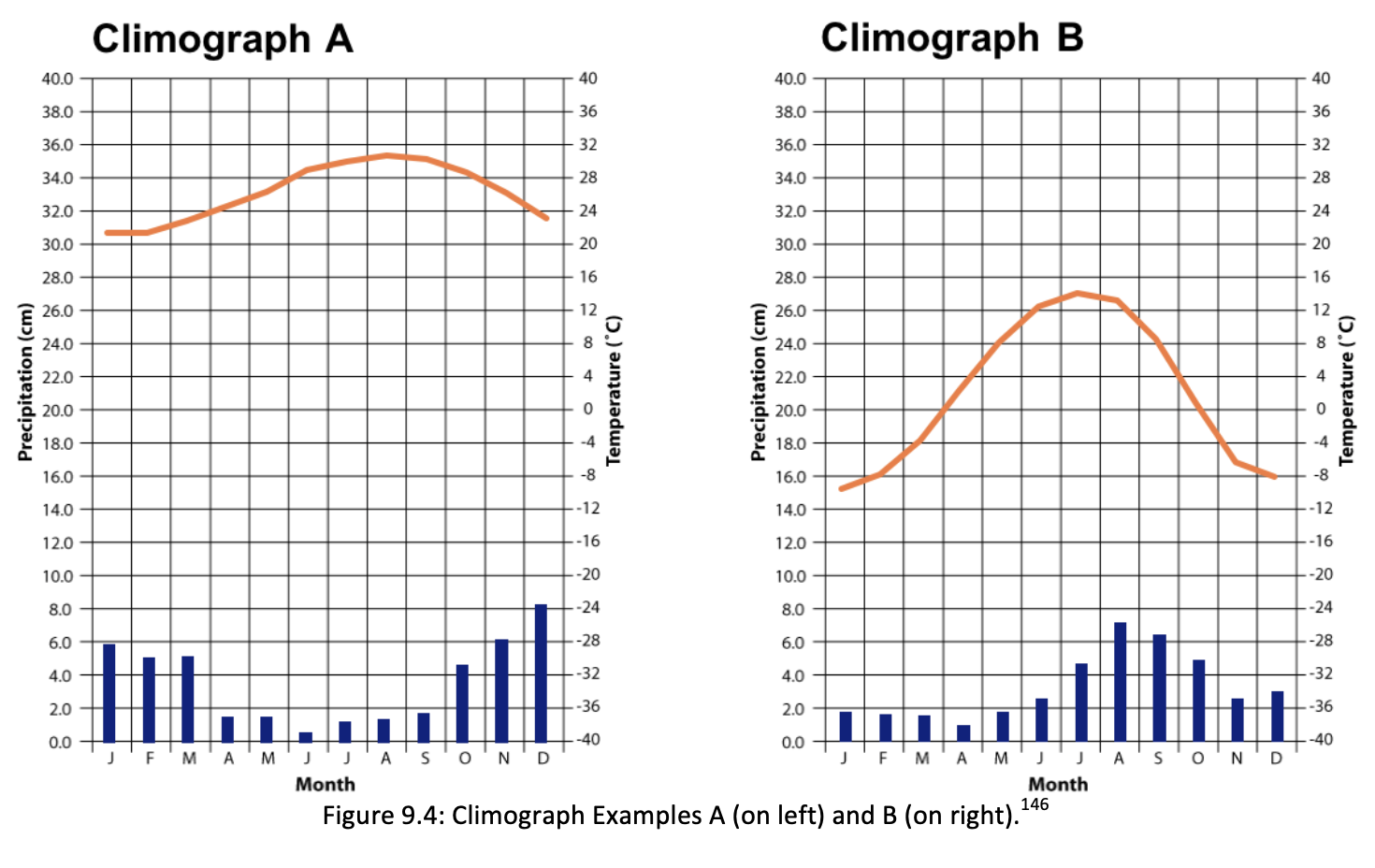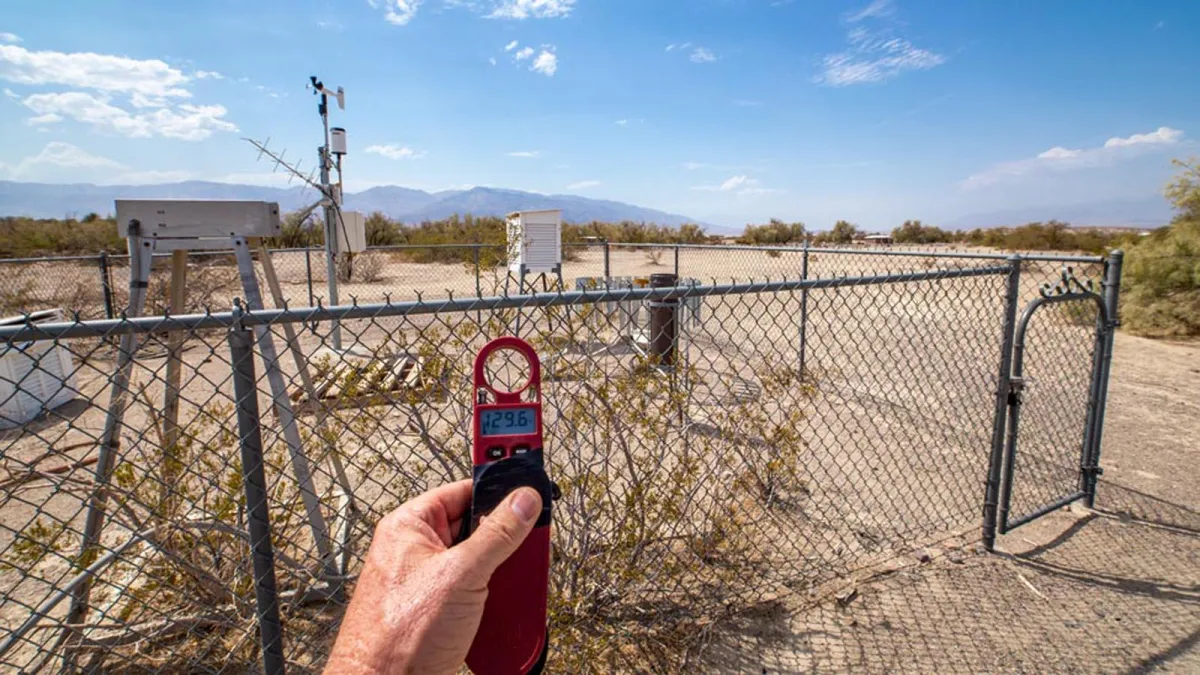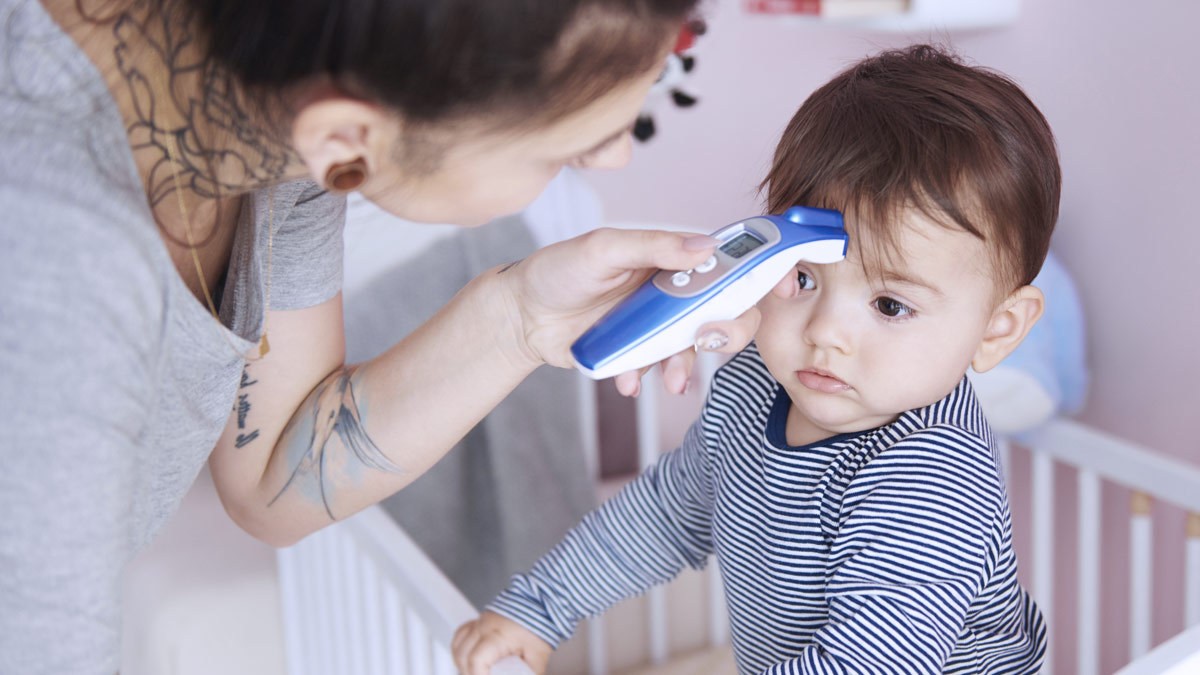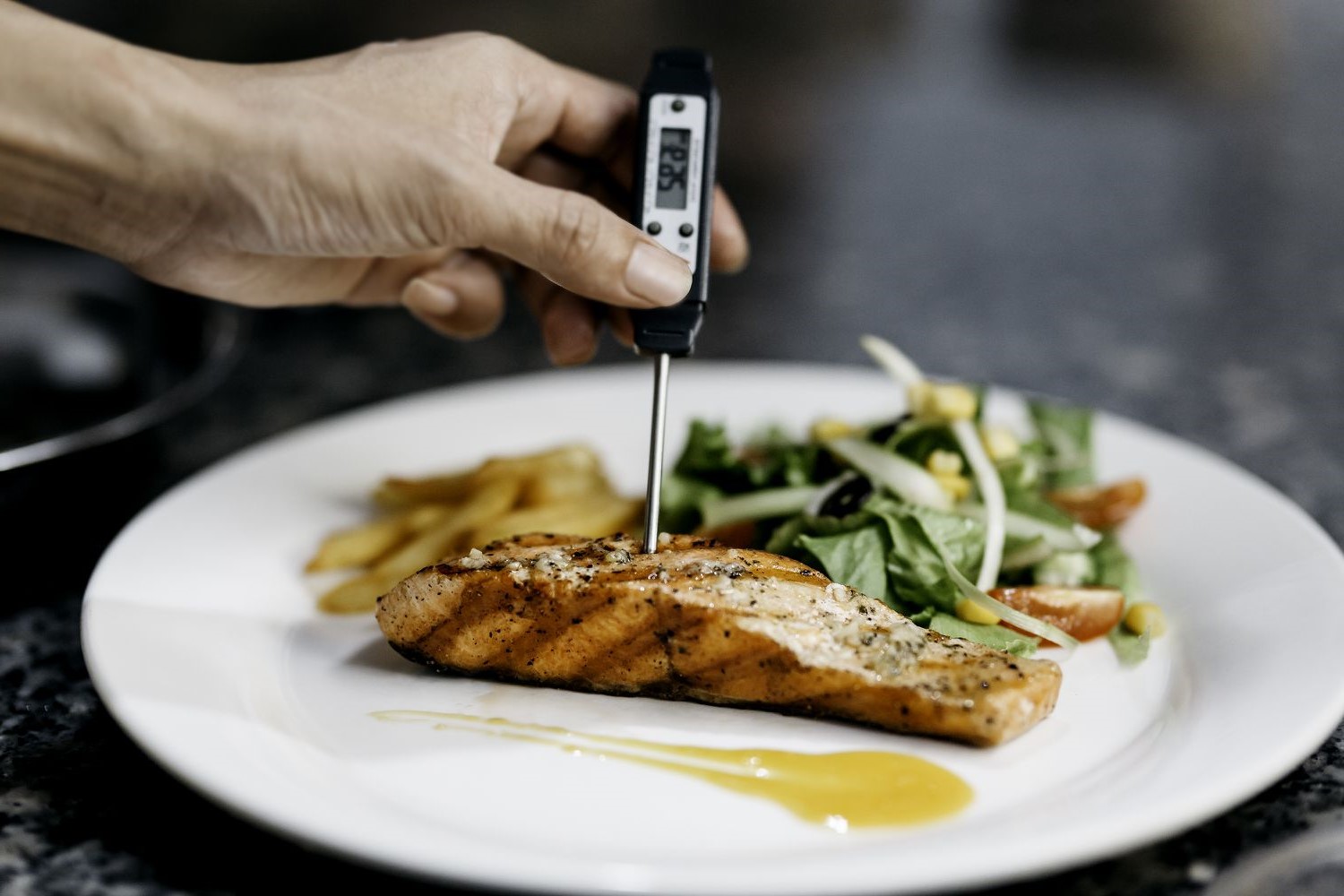Home>Weather and Climate>How To Record And Track Temperature Readings
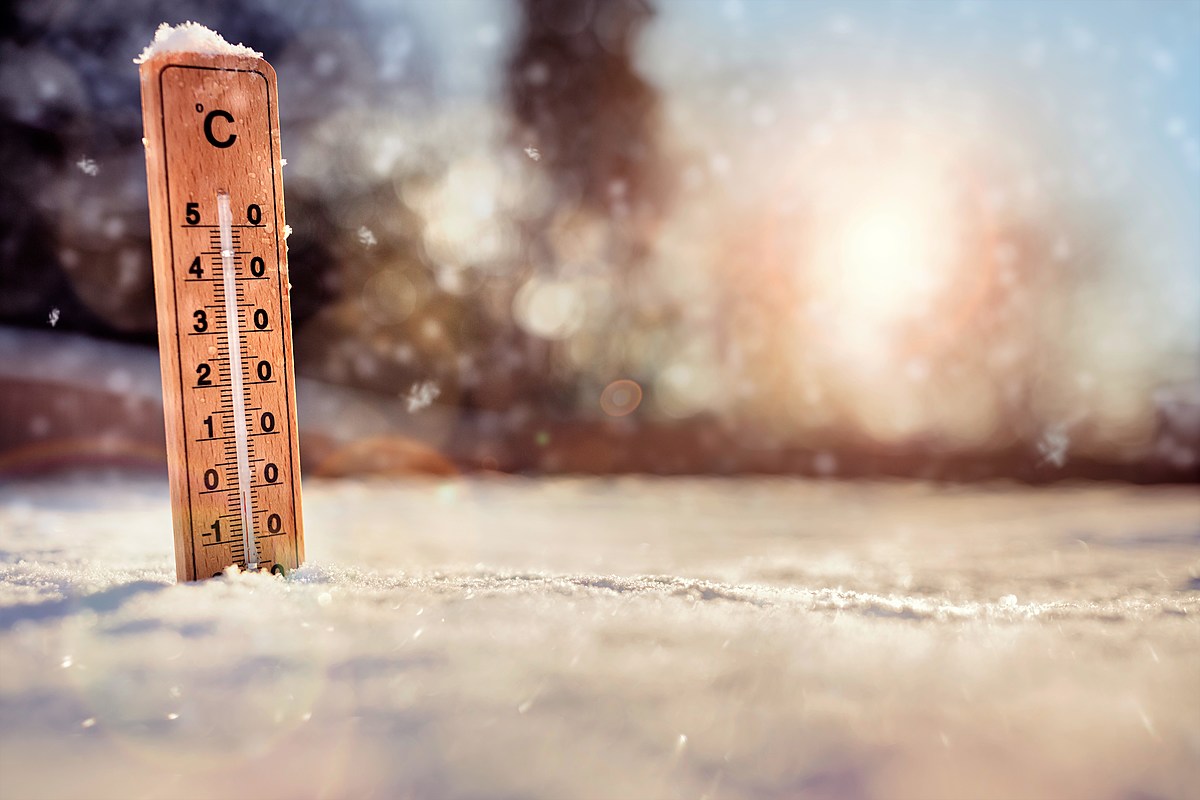

Weather and Climate
How To Record And Track Temperature Readings
Published: March 3, 2024
Learn how to effectively record and track temperature readings for weather and climate monitoring. Discover essential tips and tools for accurate data collection.
(Many of the links in this article redirect to a specific reviewed product. Your purchase of these products through affiliate links helps to generate commission for Temperatures.com, at no extra cost. Learn more)
Table of Contents
Introduction
Tracking and recording temperature readings is a crucial aspect of various industries and activities, from agriculture and healthcare to meteorology and food storage. The ability to accurately monitor and document temperature fluctuations is essential for ensuring the safety, quality, and efficiency of processes and products. Whether it's maintaining the ideal conditions for perishable goods during transportation or monitoring the climate patterns for scientific research, the significance of temperature recording cannot be overstated.
In this comprehensive guide, we will delve into the fundamental principles of recording and tracking temperature readings. From the essential tools and equipment required to the step-by-step process of capturing accurate data, this article will equip you with the knowledge and insights needed to effectively manage temperature monitoring in diverse settings.
Understanding the nuances of temperature recording is not only valuable for professionals in specialized fields but also for individuals seeking to optimize their home environments. By grasping the fundamentals of temperature tracking, you can enhance the comfort and safety of your living spaces, preserve perishable items, and contribute to environmental conservation efforts.
Join us as we explore the intricacies of temperature recording and tracking, uncovering the best practices, common pitfalls, and expert tips to empower you in this essential aspect of modern life. Whether you're a seasoned professional or a curious enthusiast, this guide will provide valuable insights into the art and science of capturing and managing temperature data.
Importance of Recording Temperature Readings
Recording temperature readings holds immense significance across a wide spectrum of industries and activities. The ability to capture and document temperature data is pivotal for ensuring the safety, quality, and efficacy of various processes and products. Let's delve into the multifaceted importance of this practice:
-
Preservation of Perishable Goods: In the realm of food and pharmaceutical industries, maintaining optimal storage and transportation conditions is paramount. By recording temperature readings at critical points along the supply chain, businesses can uphold the integrity of perishable items, safeguarding them from spoilage and contamination. This not only ensures consumer safety but also minimizes economic losses due to wasted inventory.
-
Healthcare and Biomedical Research: From vaccine storage to laboratory experiments, precise temperature monitoring is indispensable in healthcare and biomedical settings. Recording temperature readings accurately is vital for preserving the efficacy of medications, biological samples, and research materials. It also plays a pivotal role in complying with regulatory standards and quality control measures.
-
Climate and Environmental Research: Meteorological and environmental studies heavily rely on temperature recording to analyze climate patterns, track global warming trends, and predict natural disasters. Accurate and consistent temperature data is essential for understanding the impact of human activities on the environment and formulating strategies for sustainable resource management.
-
Industrial Processes and Quality Control: Numerous manufacturing and industrial processes necessitate specific temperature conditions for optimal performance and product quality. By meticulously recording temperature readings, businesses can ensure the reliability and consistency of their output, thereby enhancing customer satisfaction and operational efficiency.
-
Energy Efficiency and Cost Savings: In commercial and residential settings, monitoring temperature fluctuations can lead to significant energy savings. By recording and analyzing temperature data, individuals and organizations can identify opportunities for optimizing heating, ventilation, and air conditioning (HVAC) systems, ultimately reducing energy consumption and utility costs.
-
Compliance and Regulatory Requirements: Many industries are subject to stringent regulations regarding temperature control and monitoring. Accurate recording of temperature readings is essential for demonstrating compliance with industry standards, ensuring the safety of employees and consumers, and mitigating legal risks.
In essence, the importance of recording temperature readings transcends individual sectors, encompassing vital aspects of public health, environmental sustainability, and operational efficiency. By recognizing the far-reaching implications of temperature monitoring, individuals and organizations can harness its benefits to drive progress and innovation across diverse fields.
Tools and Equipment Needed for Recording Temperature Readings
Accurate and reliable temperature recording hinges on the utilization of appropriate tools and equipment tailored to specific monitoring requirements. Whether it's for commercial, industrial, or personal use, having the right instruments at your disposal is essential for capturing precise temperature data. Here's a detailed overview of the tools and equipment necessary for recording temperature readings effectively:
-
Thermometers: A fundamental tool for temperature monitoring, thermometers come in various types, including digital, infrared, and liquid-filled. Each type is suited for different applications, such as food safety, HVAC system diagnostics, and scientific research. Digital thermometers offer quick and precise readings, while infrared thermometers are ideal for non-contact temperature measurements. Liquid-filled thermometers are commonly used in laboratory settings for their accuracy and reliability.
-
Data Loggers: These compact devices are designed to autonomously record temperature readings at set intervals over an extended period. Equipped with internal sensors, data loggers are invaluable for continuous monitoring in environments where manual tracking may be impractical or labor-intensive. They are widely employed in pharmaceutical storage, transportation, and environmental research, providing a comprehensive dataset for analysis and compliance purposes.
-
Temperature Probes: Utilized in conjunction with thermometers and data loggers, temperature probes enable precise measurements in diverse settings. These probes come in various designs, such as penetration, surface, and air probes, each tailored to specific applications. For instance, penetration probes are commonly used in food safety to assess the internal temperature of perishable items, while surface probes are employed in industrial processes to monitor equipment and machinery temperatures.
-
Wireless Monitoring Systems: In modern temperature recording practices, wireless monitoring systems offer unparalleled convenience and flexibility. These systems comprise wireless sensors that transmit real-time temperature data to a centralized monitoring platform, enabling remote access and instant alerts for temperature deviations. Ideal for large-scale facilities and distributed environments, wireless monitoring systems streamline the process of capturing and managing temperature readings.
-
Calibration Equipment: To ensure the accuracy and reliability of temperature recording instruments, calibration equipment is indispensable. Calibration tools, including temperature baths, dry-well calibrators, and reference thermometers, are utilized to verify and adjust the precision of thermometers and temperature probes. Regular calibration is essential for upholding measurement integrity and complying with quality assurance standards.
-
Temperature Monitoring Software: As technology continues to advance, temperature monitoring software has become an integral component of modern temperature recording practices. This software facilitates the organization, analysis, and visualization of temperature data, offering insights into temperature trends, compliance status, and operational efficiency. Additionally, it enables the generation of comprehensive reports for regulatory documentation and quality management purposes.
By leveraging these essential tools and equipment, individuals and organizations can establish robust temperature recording practices, ensuring the accuracy, reliability, and regulatory compliance of their temperature monitoring endeavors. Whether it's for preserving perishable goods, optimizing industrial processes, or maintaining a comfortable living environment, the right tools are pivotal in capturing and managing temperature readings effectively.
Steps for Recording Temperature Readings
-
Identify Monitoring Points: Begin by identifying the critical locations or objects that require temperature monitoring. Whether it's a storage facility, transportation vehicle, laboratory environment, or residential space, pinpointing the specific areas where temperature readings are essential is the first step in the recording process.
-
Select Appropriate Instruments: Based on the monitoring points identified, choose the most suitable temperature recording instruments. Consider factors such as the required measurement precision, environmental conditions, and the type of surfaces or substances being monitored. Select thermometers, data loggers, or wireless sensors that align with the unique demands of each monitoring location.
-
Calibrate Recording Instruments: Before commencing temperature recording, ensure that the selected instruments are calibrated to guarantee accurate measurements. Calibration is crucial for validating the precision of thermometers and probes, providing a reliable baseline for subsequent temperature readings.
-
Establish Recording Intervals: Determine the frequency at which temperature readings will be captured. Depending on the monitoring objectives and environmental dynamics, establish appropriate recording intervals to capture fluctuations effectively. Continuous monitoring may be necessary for certain applications, while periodic readings may suffice for others.
-
Position and Install Instruments: Place the recording instruments in strategic positions to capture representative temperature data. Ensure that thermometers, probes, or sensors are positioned in close proximity to the target surfaces or substances, minimizing the influence of external factors on the recorded readings. For wireless monitoring systems, install the sensors and configure the centralized monitoring platform for seamless data collection.
-
Initiate Data Collection: Commence the process of recording temperature readings according to the established intervals. Activate data loggers, initiate wireless monitoring systems, or manually capture temperature data using thermometers and probes. Exercise diligence and precision during the data collection phase to ensure the accuracy and reliability of the recorded readings.
-
Document and Label Readings: As temperature readings are captured, document them meticulously, including the date, time, and specific location or object being monitored. Labeling the readings with descriptive identifiers facilitates organized data management and simplifies the analysis and interpretation of temperature trends over time.
-
Review and Validate Data: Periodically review the recorded temperature data to identify anomalies, trends, or deviations from the expected range. Validate the data against predefined thresholds or benchmarks, flagging any instances of temperature fluctuations that may warrant further investigation or corrective actions.
-
Archive and Backup Records: Establish a systematic approach for archiving and backing up temperature records to safeguard against data loss or corruption. Whether it's through digital storage systems, cloud-based platforms, or physical logbooks, secure the recorded temperature readings for future reference, compliance audits, and trend analysis.
-
Analysis and Reporting: Utilize temperature monitoring software or analytical tools to interpret the recorded data, uncovering insights into temperature patterns, compliance status, and operational performance. Generate comprehensive reports detailing the recorded readings, trends, and any corrective measures implemented based on the analysis.
By following these systematic steps for recording temperature readings, individuals and organizations can uphold the integrity of their temperature monitoring practices, fostering a proactive approach to quality control, regulatory compliance, and environmental stewardship.
Tips for Tracking Temperature Readings
-
Routine Maintenance and Calibration: Regularly inspect and calibrate temperature recording instruments to ensure their accuracy and reliability. By adhering to a structured maintenance schedule, you can mitigate the risk of erroneous readings and uphold the integrity of your temperature tracking efforts.
-
Utilize Redundant Monitoring: Implement redundant temperature monitoring at critical points to enhance data redundancy and fault tolerance. This approach provides a safety net against instrument malfunctions or environmental anomalies, enabling cross-verification of temperature readings for added confidence in the recorded data.
-
Remote Monitoring Capabilities: Leverage wireless monitoring systems with remote access features to facilitate real-time tracking of temperature readings. This enables prompt response to temperature deviations and minimizes the reliance on manual data collection, particularly in distributed or inaccessible monitoring environments.
-
Threshold-based Alerts: Configure temperature monitoring systems to trigger alerts when readings surpass predefined thresholds. By setting threshold-based alarms, you can proactively address temperature fluctuations, preventing potential risks to product integrity, equipment functionality, or environmental conditions.
-
Data Analysis and Trend Identification: Embrace data analysis tools to identify temperature trends and patterns within recorded data. By discerning recurring fluctuations or anomalies, you can preemptively address underlying issues and optimize temperature management strategies for enhanced efficiency and compliance.
-
Environmental Factors Consideration: Take into account environmental factors that may influence temperature readings, such as ambient humidity, air circulation, and proximity to heat sources. Understanding these variables allows for contextual interpretation of temperature data and informed decision-making in response to environmental dynamics.
-
Documentation and Audit Trail: Maintain comprehensive documentation of temperature readings, including metadata such as monitoring locations, instrument identifiers, and personnel involved. This creates an audit trail for regulatory compliance, quality assurance, and retrospective analysis of temperature tracking activities.
-
Training and Awareness: Provide training and awareness programs for personnel involved in temperature tracking to ensure consistent adherence to best practices. Empowering individuals with the knowledge and skills required for accurate data collection and interpretation is pivotal for maintaining the reliability of temperature readings.
-
Periodic Review and Optimization: Periodically review temperature tracking processes and identify opportunities for optimization. Whether it involves refining monitoring intervals, updating instrument configurations, or integrating advanced monitoring technologies, continuous improvement fosters the evolution of temperature tracking practices.
-
Collaborative Data Sharing: Foster collaborative data sharing and analysis among relevant stakeholders, such as quality control teams, regulatory compliance officers, and operational managers. By promoting transparency and collective insights, collaborative data sharing enhances the holistic understanding of temperature trends and fosters informed decision-making.
By integrating these tips into your temperature tracking endeavors, you can elevate the precision, resilience, and actionable value of recorded temperature readings, contributing to enhanced product quality, operational efficiency, and regulatory compliance.
Read more: Portland’s Highest Recorded Temperature
Common Mistakes to Avoid
In the realm of temperature recording and tracking, certain pitfalls can compromise the accuracy, reliability, and efficacy of the collected data. By recognizing and mitigating these common mistakes, individuals and organizations can fortify their temperature monitoring practices and uphold the integrity of recorded readings. Here are the critical mistakes to avoid:
-
Inadequate Calibration: Failing to calibrate temperature recording instruments regularly can lead to erroneous readings and undermine the trustworthiness of the captured data. Neglecting calibration protocols introduces the risk of inaccurate temperature measurements, potentially impacting product quality, regulatory compliance, and operational decision-making.
-
Poor Instrument Placement: Placing thermometers, probes, or sensors in suboptimal locations can distort temperature readings, rendering the recorded data inconclusive or misleading. Inaccurate placement, such as proximity to heat sources or inadequate insulation, compromises the fidelity of temperature monitoring and hampers the ability to discern genuine environmental trends.
-
Neglecting Environmental Factors: Overlooking environmental variables that influence temperature readings, such as humidity levels, air circulation patterns, and localized heat sources, can lead to misinterpretation of recorded data. Failing to account for these factors diminishes the contextual relevance of temperature readings and impedes informed decision-making.
-
Inconsistent Monitoring Intervals: Irregular or infrequent recording intervals disrupt the continuity of temperature data, potentially obscuring critical fluctuations or anomalies. Inadequate monitoring intervals may result in missed opportunities to detect temperature deviations, compromising the proactive management of environmental conditions and product integrity.
-
Lack of Redundancy: Relying solely on a single monitoring point or instrument without redundancy measures introduces vulnerability to undetected malfunctions or environmental variations. Insufficient redundancy diminishes the robustness of temperature tracking, increasing the likelihood of oversight in the event of equipment failure or localized disturbances.
-
Failure to Document Anomalies: Neglecting to document and investigate temperature anomalies or deviations undermines the diagnostic value of recorded data. Anomalies may signify underlying issues that require attention, and the failure to document and address these deviations hinders the comprehensive understanding of temperature dynamics and potential risks.
-
Inadequate Data Security: Insufficient measures to secure and backup recorded temperature data pose risks of data loss, corruption, or unauthorized access. Inadequate data security protocols compromise the reliability and auditability of temperature records, potentially impacting compliance efforts and retrospective analysis.
-
Disregarding Regulatory Compliance: Ignoring industry-specific regulations and standards pertaining to temperature monitoring can lead to non-compliance and legal repercussions. Failure to align temperature tracking practices with regulatory requirements jeopardizes product safety, operational integrity, and organizational reputation.
By steering clear of these common mistakes and embracing best practices in temperature recording and tracking, individuals and organizations can fortify the accuracy, reliability, and actionable value of captured temperature readings, fostering a proactive approach to quality control, operational efficiency, and environmental stewardship.
Conclusion
In conclusion, the meticulous recording and tracking of temperature readings are indispensable practices with far-reaching implications across diverse industries and everyday environments. From preserving perishable goods and ensuring the efficacy of pharmaceuticals to understanding climate patterns and optimizing energy efficiency, the significance of temperature monitoring cannot be overstated.
By embracing the best practices outlined in this guide, individuals and organizations can elevate the precision, resilience, and actionable value of recorded temperature readings. The utilization of appropriate tools and equipment, coupled with systematic steps for capturing temperature data, empowers stakeholders to proactively manage environmental conditions, uphold product integrity, and comply with regulatory standards.
Furthermore, the incorporation of advanced monitoring technologies, such as wireless monitoring systems and temperature monitoring software, enables real-time tracking, trend analysis, and remote access capabilities, fostering a proactive and data-driven approach to temperature management.
The integration of insightful tips for temperature tracking, coupled with the avoidance of common mistakes, equips practitioners with the knowledge and awareness needed to fortify the accuracy, reliability, and efficacy of temperature recording practices. By leveraging redundant monitoring, threshold-based alerts, and collaborative data sharing, stakeholders can enhance the resilience and actionable value of temperature readings, contributing to enhanced product quality, operational efficiency, and regulatory compliance.
In essence, the art and science of recording and tracking temperature readings transcend mere data collection; it embodies a commitment to safety, quality, and environmental stewardship. By embracing these principles and best practices, individuals and organizations can harness the transformative potential of temperature monitoring, driving progress and innovation across diverse fields.
As we navigate the complexities of a rapidly evolving world, the ability to capture and manage temperature data with precision and foresight becomes increasingly pivotal. Whether it's safeguarding public health, optimizing industrial processes, or contributing to environmental sustainability, the impact of temperature monitoring reverberates through the fabric of modern society, shaping a future where safety, quality, and efficiency converge harmoniously.
In essence, the art and science of recording and tracking temperature readings transcend mere data collection; it embodies a commitment to safety, quality, and environmental stewardship. By embracing these principles and best practices, individuals and organizations can harness the transformative potential of temperature monitoring, driving progress and innovation across diverse fields.
